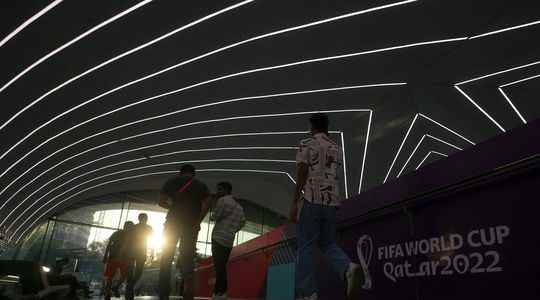On the brochures distributed at the information center of the oldest district of Doha, converted into a technological and environmental showcase of Qatar, the superlatives abound. The Msheireb eco-district is in turn presented as the largest connected car park in the world; the first wellness resort in the Middle East and the smartest site in the country. On the issue of waste management, water recovery or the use of photovoltaic energy, the place piles up records and international certifications.
For Qatar, the environment remains a sensitive subject. The emirate rejects 32 tons of CO2 per inhabitant per year (compared to 15 tons for the United States or 4.5 tons for France), which makes it the largest polluter in the world per citizen. Especially since the emirate has presented itself as the first country to organize a World Cup aiming for carbon neutrality. However, even Fifa recognizes it in a June 2021 report: more than 3.6 million tonnes of CO2 will be caused by this World Cup, compared to 2.1 million tonnes during the previous edition in Russia in 2018.
Solar panels to produce chilling air conditioning
If Qatar can afford such a display, it is because it finances hundreds of green projects aimed at offsetting the carbon footprint of the event. Its commitment is simple: remove as much CO2 from the atmosphere as it has emitted. “It’s totally false advertising, opposes Gilles Dufrasne, member of the environmental association Carbon market watch and author of a report on the event. The organizer bought 400,000 carbon credits [un crédit correspond à une tonne de CO2], when they should have gotten at least 3.6 million. It’s called greenwashing!”
In Msheireb, in this wooded district carpeted with white stones, Qatar wants to show its commitment against climate change, and exhibits the proof of its unrestrained action. 6,400 solar panels have been installed on the roofs of 27 buildings, enough to produce electricity for all the hotels and businesses in the area. “We produce no carbon emissions,” says Msheireb Properties, the group behind the project. But the paradoxes are never far away in Qatar: the district’s photovoltaic energy is mainly used to provide air conditioning that freezes your fingertips when you enter a shopping center. The automatic door most often remaining ajar, the cold air slips into the atmosphere without disturbing passers-by.
Like Mschreib, Qatar is committed to ecological transition by following its mantra: invest massively in futuristic and massive projects. The rehabilitation of this district, completed in 2015, is a form of experimentation aimed at being extended on a larger scale, as part of the “Qatar National Vision 2030” strategic programming plan. The emirate has set itself the goal of meeting a quarter of Qatar’s energy demand through renewable energy by the end of the decade. “The message is simple, it aims to say: ‘we are green’. It’s fair game, and it’s crisis communication”, comments Gilles Paché, professor of management sciences at Aix-Marseille University who has worked on the environmental impact of the World Cup.
The emirate of paradoxes
Another paradox: 70% of non-drinkable water, especially for toilets, is reused and refined water. But, in the middle of the arid lands of Qatar, the fountains flow without interruption almost everywhere in the district. The tram that makes its way through the middle of the arteries is electric but, with the exception of tourists, very few Qataris use it. All the lights are equipped with self-acting LED bulbs, but they remain permanently lit during the World Cup period.
Qatar pays little attention to these contradictions. For the emirate, the important thing is elsewhere: “Msheireb’s mission is to change the way people think about urban life” and to “take better care of the environment”, assures the official communication. “There is a real effort by Qatar to reduce its carbon footprint, there is no denying it, underlines Gilles Paché. But the country’s lifestyle and weather conditions undoubtedly require colossal energy expenditure.” The Qatari effort could first go through the lowering of air conditioning in stadiums and shopping centers…
